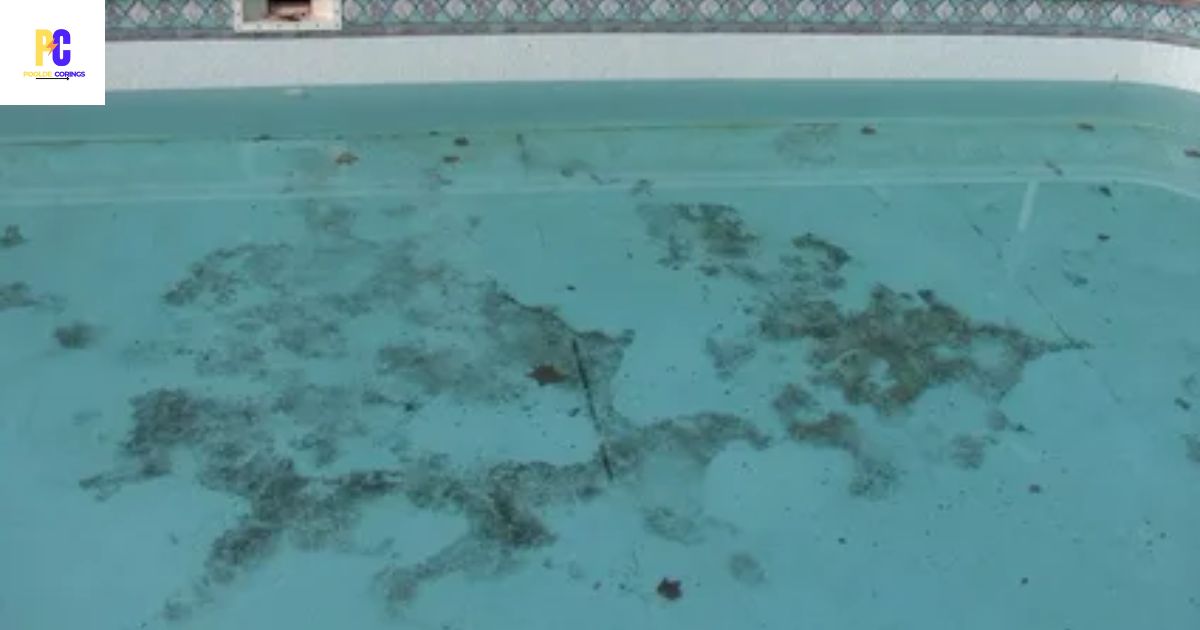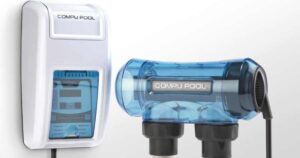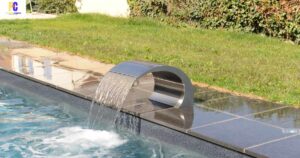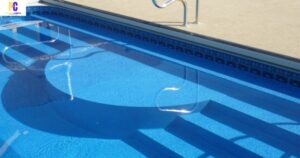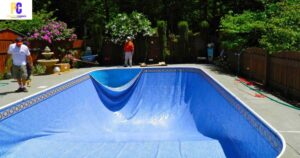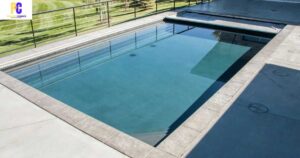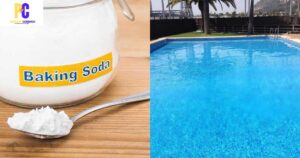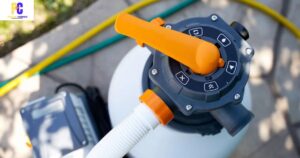To remove algae stains from a pool liner, start by brushing the affected areas with a pool brush. Use an algae-killing treatment specifically designed for pool use, applying it according to the product’s instructions. Allow the treatment to sit for the recommended time, then scrub the liner again. Finally, ensure proper water circulation, filtration, and regular maintenance to prevent future algae growth.
Transform your pool from green to pristine. Say goodbye to unsightly algae stains with our simple guide on removing them from your pool liner. Dive into crystal-clear waters by following easy steps and ensure a stain-free oasis. Ready to reclaim your pool? Let’s make those algae stains vanish – it’s time for a refreshing change.
Removing algae stains from a pool liner involves brushing affected areas, applying an algae-killing treatment, and thorough scrubbing. Follow product instructions, let the treatment sit, and scrub again for optimal results. Maintain proper pool hygiene to prevent future algae growth.
Understanding the Problem of Algae Stains in Pool Liners
Hey there, pool owners! We all love a good splash in the pool, but sometimes those pesky algae stains can ruin our swimming experience. Algae stains not only make your pool liner look unsightly, but they can also pose a health risk if left untreated. In this article, we’ll dive into the world of algae stains on pool liners and learn how to remove them effectively. So put on your goggles, grab your pool skimmer, and let’s get started!
Types of Algae and Their Effects on Pool Liners
Now, before we jump into the removal process, let’s familiarize ourselves with the three main culprits behind those stubborn algae stains: green algae, black algae, and mustard algae.
Green Algae
Ah, the classic green algae. This is the most common type you’ll encounter in your pool. It’s like your pool liner’s arch-nemesis, turning it into a slimy, green mess. Green algae thrive in warm and stagnant water, so if you notice your pool turning into a green lagoon, it’s a telltale sign of their presence.
Black Algae
Black algae are the pool liner’s equivalent of a super villain. They have a knack for attaching themselves firmly to porous surfaces, making them incredibly difficult to remove. These pesky little buggers can create dark, black stains on your pool liner, making it look like a crime scene for aquatic organisms.
Mustard Algae
Mustard algae may sound innocent enough, but don’t be fooled by their name. They can leave your pool liner with a yellowish tint, making it look more like a jar of mustard than a refreshing oasis. These algae are known for their resistance to chlorine, making them a formidable foe to tackle.
Identifying Algae Stains: Signs and Symptoms
Now that we know our algae enemies, it’s time to spot the signs and symptoms of their presence on your pool liner. Look out for discoloration, slimy textures, or unusual growth on the liner’s surface. If your pool starts resembling a swamp from a horror movie, it’s a clear indication of algae infestation.
Preventive Measures: Maintaining Proper Pool Chemistry and Hygiene
Instead of battling algae stains head-on, wouldn’t it be great if we could prevent them from happening in the first place? Here are some preventive measures you can take to maintain a clean and algae-free pool.
Regular Testing and Balancing of Pool Water
Keeping your pool water properly balanced is key to preventing algae growth. Regularly test the water’s pH, chlorine levels, and alkalinity, and make necessary adjustments. Think of it as a science experiment, but with the reward of a crystal-clear pool.
Adequate Filtration and Circulation
Your pool’s filtration system is its unsung hero, constantly working behind the scenes to keep the water clean. Make sure to clean and backwash the filter regularly to ensure optimal performance. Additionally, proper circulation of water prevents algae from settling in stagnant spots, so keep that water flowing!
Regular Cleaning and Maintenance
Lastly, regular cleaning and maintenance are essential for algae prevention. Brushing the pool walls, vacuuming debris, and skimming the surface regularly will help eliminate any potential homes for algae. Plus, it’s a great workout for those biceps!
With these preventive measures in place, you’ll be one step ahead in the battle against algae stains. But if, despite your best efforts, those stains still make an appearance, don’t worry. We’ve got your back with effective removal methods. So stay tuned for our next article on “How To Remove Algae Stains From Pool Liner Like a Pro!
Step-by-Step Guide: Removing Algae Stains from Pool Liner
| Steps | Description |
| 1. Assessment: | Begin by identifying the type of algae stain on the pool liner, whether it’s green, yellow, or black. |
| 2. Gather Supplies: | Collect the necessary tools, including a pool brush, algae-killing treatment, and protective gear such as gloves and goggles. |
| 3. Brushing: | Brush the affected areas vigorously to loosen the algae from the liner’s surface, preparing it for treatment. |
| 4. Treatment Application: | Apply a specialized algae-killing treatment according to the product’s instructions, ensuring even coverage. |
| 5. Waiting Period: | Allow the treatment to sit for the recommended time, giving it the chance to effectively target and eliminate the algae. |
| 6. Scrubbing: | After the waiting period, scrub the pool liner again to remove any remaining loosened algae, enhancing the cleaning process. |
| 7. Preventive Measures: | Implement proper water circulation, filtration, and regular maintenance to prevent future algae growth and maintain a pristine pool. |
Brushing and Scrubbing the Liner
Now that the pool is squeaky clean, it’s time to target those pesky algae stains. Grab a sturdy pool brush and start scrubbing the liner vigorously. Focus on the areas where the stains are visible, using circular motions to break down the algae. Don’t be afraid to put some elbow grease into it!
Shocking the Pool and Applying Algaecide
Once you’ve brushed away the algae, it’s time to give it a good shock. No, not with an electric prod, but with a pool shock treatment. Follow the instructions on the shock treatment product carefully and apply it to the pool water. To ensure that the algae doesn’t make a comeback, add an algaecide to the mix. This dynamic duo will work together to annihilate any remaining algae and prevent future growth.
Vacuuming and Filtering the Water
Now that the algae is history, it’s time to remove any remnants. Set up your pool vacuum and get to work. Move it slowly and methodically, making sure to cover every inch of the pool. The vacuum will suck up any remaining algae particles, leaving your pool water crystal clear. Remember to clean or replace your pool filter regularly to keep it in tip-top shape.
Alternative Methods: Natural and Chemical Solutions for Algae Removal
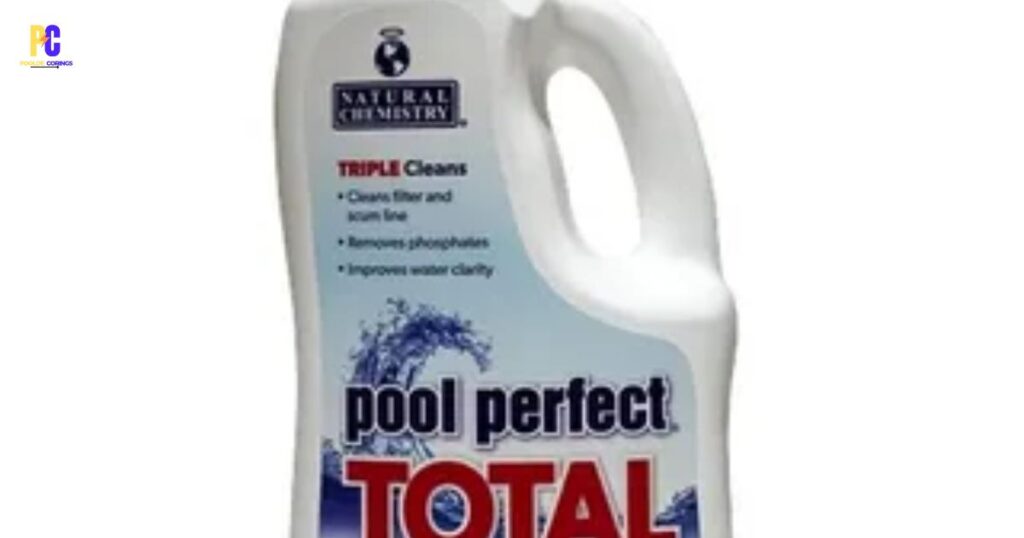
Vinegar and Baking Soda Solution
If you prefer a more natural approach, look no further than your kitchen pantry. Create a paste using equal parts vinegar and baking soda, then apply it to the algae stains. Let it sit for a while before scrubbing it away. The mild acidity of vinegar and the gentle abrasiveness of baking soda work wonders in removing algae stains.
Enzyme Cleaners
Enzyme cleaners are another fantastic option for tackling algae. These cleaners contain natural enzymes that break down organic matter, including algae. Simply follow the instructions on the bottle, let the cleaner do its thing, and then brush away any residual stains.
Copper-Based Algaecides
If you’re dealing with stubborn algae that just won’t budge, copper-based algaecides can come to the rescue. Copper ions are highly effective in killing algae, so follow the directions on the bottle to apply the appropriate amount to your pool. Just be cautious not to overuse it, as too much copper can cause staining.
Maintenance and Long-Term Prevention: Keeping Algae at Bay
- Regularly test and balance pool water chemistry to create an environment inhospitable to algae growth.
- Clean pool filters and skimmers on a routine basis to ensure optimal filtration and circulation.
- Periodically shock the pool with chlorine to eliminate any lingering algae spores.
- Maintain proper water circulation to prevent stagnant areas where algae can thrive.
- Scrub pool walls and surfaces consistently to discourage algae buildup.
Proper Pool Water Chemistry and Balance
- Test pool water regularly using a reliable kit to measure pH, chlorine, alkalinity, and calcium levels.
- Keep pH levels between 7.4 and 7.6 for optimal comfort and effectiveness of chlorine.
- Maintain chlorine levels within the recommended range to ensure effective sanitization.
- Adjust alkalinity to stabilize pH and prevent fluctuations that can promote algae growth.
- Monitor calcium hardness to prevent issues like scale buildup or water corrosiveness.
UV Sterilizers and Ionizers
For an extra line of defense against algae, consider using UV sterilizers or ionizers. These devices emit UV light or release copper and silver ions into the water, inhibiting algae growth. They can be a great investment for long-term algae prevention.
FAQ,s
What causes algae stains on a pool liner?
Algae stains are typically caused by the growth of different algae types in the pool water, often due to inadequate sanitation, poor water circulation, or imbalanced chemical levels.
Can I use regular household cleaners to remove algae stains?
It’s not recommended. Use algae-specific treatments designed for pools, as household cleaners may not effectively target and eliminate the algae, and they can harm the pool liner.
How long does it take to remove algae stains from a pool liner?
The time varies depending on the severity of the stains. Generally, following the product instructions for treatment and allowing sufficient scrubbing time is crucial for effective removal.
Can I prevent algae stains from coming back after removal?
Yes, by maintaining proper water chemistry, regular cleaning, and using algaecides as preventive measures, you can significantly reduce the likelihood of algae stains returning.
Are there professional services available for algae stain removal?
Yes, many pool maintenance professionals offer services specifically for algae stain removal, ensuring a thorough and expert approach to restoring your pool’s appearance.
conclusion
mastering the art of removing algae stains from your pool liner involves a strategic approach that combines proper identification, effective treatment application, and ongoing maintenance. By understanding the types of algae causing the stains and selecting appropriate products and techniques, you can restore your pool to its pristine state. Remember to follow a step-by-step guide, utilizing the right tools and protective gear, to ensure both efficiency and safety throughout the removal process.
In the realm of pool maintenance, prevention is key. Beyond stain removal, maintaining proper water chemistry, regular cleaning, and implementing preventive measures significantly contribute to an algae-free pool environment. By adhering to these practices, you not only eliminate current issues but also create a long-term strategy for keeping algae at bay. Take control of your pool’s health and aesthetics, and enjoy a clear, inviting swimming space by embracing the comprehensive approach outlined in this guide on how to remove algae stains from your pool liner.
